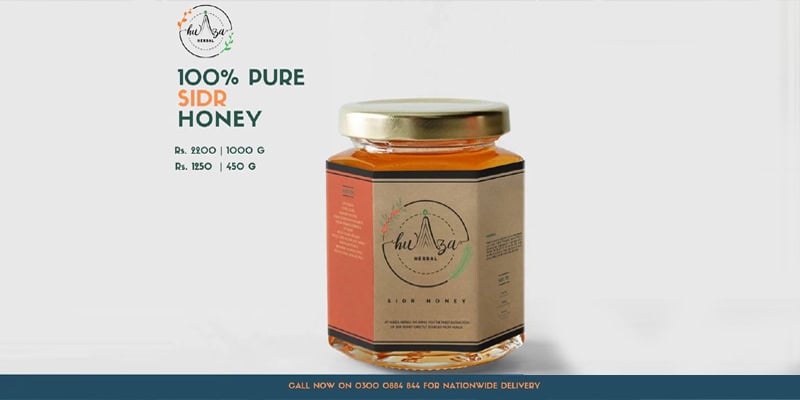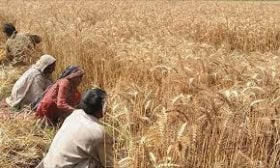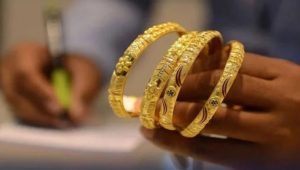Honey is a gift from the heavens, a complex natural food produced by one of the most hardworking living beings on Earth: the honeybee. It also happens to be one of the few sweetening agents humans can use without processing.
Buying pure honey is no easy task. All sellers will claim to be selling purity, but do we know how to identify real honey? Luckily science has evolved enough that we can find the truth behind these claims with a simple laboratory visit.
This article is an attempt to educate our readers on what are the honey purity benchmarks set by Pakistan Standards and Quality Control Authority (PSQCA). These benchmarks are used globally – including the European Union which has the toughest food safety regulations.
Let’s dive right into a brief study of the Honey testing parameters our batches at Hunza Herbal pass through, namely:
- Moisture
- Ash Content
- Reducing and Non-Reducing Sugars
- HMF Content
- Acidity
- Water Insoluble Solids
- Diastase Activity
Diastase Activity
Let us start off with the most important benchmark for honey purity one should look for when buying honey.
Added by the bee during collection and ripening of flower nectar, Diastase is one of the major enzymes in honey, next to invertase and glucose oxidase. One unit of diastase activity is defined as that amount of α-amylase, which will convert 0.01 gram of starch to the prescribed end-point in one hour at 40 °C. The results are expressed in Schade units per gram of honey and termed Diastase Number.
In addition to indicating towards potential heat treatment of honey, Diastase Activity helps us figure out probably the most critical element of honey purity: whether the bees are taking the nectar from floral (flower) sources or are they being fed sugar syrup. Since the bee will be making the honey in both cases, it becomes tricky identifying between the two types of honey if Diastase Activity is not checked for.
Once the honey is consumed, Diastase enzyme helps us break down the sugars so honey can be digested and our body can absorb the maximum amount of nutrition. Without Diastase in honey, it would simply be like consuming huge amounts of sugar since the body will not have the needed enzymes to break it down. In this case, the consumption of honey actually becomes an unhealthy activity – much like most sugar consumption is.
Diastase is measure on a scale of 3-8 as an acceptable range. We’re delighted to tell that Hunza Herbal’s Sidr honey returns a 7.5 on Schade scale. It shows when the bees feed on natural nectar!
Moisture:
Moisture level is an important criterion in the processing of honey. As nature has it, the bees cap off the comb when moisture level hits 17-18%. Some beekeepers are in a rush and harvest the honey before the comb is naturally sealed off. This means the honey can have a higher amount of moisture which can cause the honey to ferment.
It is important to know that honey from different nectar sources will have different moisture content. Clover Honey, for example, has a moisture level of 23% as an acceptable range. However, most honey varieties will start to ferment at 24%. In fact, honey with moisture level above 21% is not fit for sale in most well-regulated markets. Our Sidr honey has a moisture level of 16% – almost exactly where the bees consider it ripe for eating.
Tip: keep honey in dried places for storage as honey will lose moisture to the air around it and improve its quality.
Ash Content:
Ash content analysis is a common testing technique to evaluate the quality of many foods. It is a measure of the total amount of inorganic minerals such as Calcium, Sodium, and Potassium etc. found within food.
The test is conducted by burning (called incinerating) a sample and analyzing for non-mineral elements found in the ash. The Ash test result is expressed as % ash. The total ash content equals the weight of the ash divided by the weight of the original sample multiplied by 100%. A magnified optical examination of the ash residue is performed to determine ash contents.
Ash content in floral honey (where nectar is taken from flowers by the bee) should not exceed 1% as per international honey standards as well as standards adopted by Pakistan Standards and Quality Control Authority. Hunza Herbal’s Sidr Honey has a 0.45% ash content – well within the range defined by PSQCA.
Reducing and Non-Reducing sugars:
Reducing and Non-Reducing sugars are different types of sugars found in honey and many other food sources. Reducing Sugars found in honey are Glucose, Fructose, and Maltose while Non-Reducing Sugar found in honey is Sucrose.
The required standard for Reducing Sugars in honey set by PSQCA is at a minimum of 65% while the sample should not exceed a Maximum of 10% for Non-Reducing Sugars. Levels of Reducing and Non-Reducing Sugars in honey can vary for different types of honey and also depends on the geography and weather around the apiary.
Hunza Herbal’s variety of Sidr honey has 72.53% Reducing and 5.5% Non-Reducing Sugars. Yes, it’s sweet.
It’s important to remember that level of Reducing and Non-Reducing Sugars can be manipulated in honey using artificial sources, so the levels of sugars in honey alone cannot be used to determine the purity.
HMF Content:
HMF is short for Hydroxymethylfurfural, created by the thermal decomposition (breakdown due to temperature) of fructose (one of the main Reducing Sugars in honey). It’s common for HMF to form slowly during storage but the levels will rise very quickly if the honey is heated.
Natural honey has different levels of HMF when it’s fresh. When honey is still within the hive, it will have less than 1mg of HMF per KG of honey but it will start to rise when the temperature exceeds 20°C.
Temperatures in beehive can rise above 40°C during summers (crop season for honey in many parts of Pakistan). It is usual for HMF to be below 10 mg/kg in freshly extracted honey. High levels indicate excessive heating during the extraction process. The international food standards require that the HMF content of honey after processing and/or blending shall not be more than 40 mg/kg. PSQCA is more lenient and has 80mg/kg as an acceptable range.
Hunza Herbal honest is tested for HMF levels and we have less than 2mg/kg in our honey, indicating very low levels of heating and very fresh honey.
Acidity:
It might be surprising to some but acidity in honey exists naturally, caused by the organic acid usually existing in all kinds of honey (citric, oxalic, tartaric, acetic, etc.). This acidity is caused either by the nectar or bees’ secretions.
The acidity of honey is usually determined by titration (a chemical process) and the Acidity levels are measured using “mili equivalents/KG of honey”. High-quality commercial honey should not exceed 50 m.eq/kg. PSQCA has 40 m.eq/kg as an acceptable range for acidity while Hunza Herbal samples return a 13 m.eq result.
The acidity of natural honey will grow with time as fermentation will take place over time but a very low acidity level – close to 1 m.eq/kg points to adulteration of honey through sugar syrup.
Water Insoluble Solids Content
Honey insoluble matter includes pollen, honey-comb debris, bee, and filth particles and is thus a criterion of honey cleanliness. It is measured by filtration of a honey solution on a glass container. PSQCA indicates a maximum 0.5% of Water-Insoluble Solids Contents while Hunza Herbal has 0.02% of insoluble solids in its batches. It can’t get any cleaner than this, can it?
Pakistan Standards and Quality Control Authority use all of the above criteria to evaluate the quality of a honey sample. Certificate of Analysis for two specimens Hunza Herbal got tested can be found here. You will not that Sample 1 (which was heated before being provided for testing) failed to show any diastase activity while Sample 2 (Our Sidr Honey) is rich in Diastase enzyme. It is worth knowing more about the foods we consume and remember to ask about Diastase Activity when you’re buying honey from sellers who claim it is real.
















